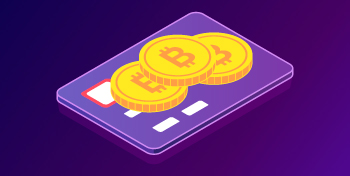What’s the difference between cryptocurrency and digital currency? It turns out that many believe these two are the same class of assets. But it is far from being the case.
Digital versions of traditional fiat.
First of all, it should be mentioned that even traditional printed currencies are now used for the main part with digital tools. But as far as they are not digital by nature, they don’t have all the characteristics which a true virtual currency has.”
Digital currencies issued by the same central banks that are responsible for printing the fiat, are called CBDC.
In financial terms, they represent optional currencies for all intents and purposes, and differ from the traditional money only by the technology on the basis of which they are issued, exchanged and managed.
Still CBDC does not even has to be based on blockchain. Indeed, it’s not usually so because blockchain is described as a decentralized distributed data ledger based on chain of blocks. But when it comes to ledgers providing basis for CBDC, they are not decentralized at all.
So far it should be clear that digital currencies are not cryptos at all, and actually they have nothing in common with real cryptos.
But, nevertheless, they have something in common, namely the technology that are based on.
Thus, traditional money is not issued on one data ledger. Surely, those being issued directly by central banks, are reflected in balance sheets of those banks. But, for instance, currencies released by commerce banks are reflected separately.
Furthermore, there is even no single ledger for all transactions since those transactions that happen via physical exchange of notes cannot be recorded at all.
CBDCs, on the contrary, has a single register which keeps all releases and operations. From this point of view (but only from this one) they look more like cryptos that like traditional money. In fact, legally, all electronic transactions in fiat currencies should be processed by mediators who would verify identities of participating subjects, and this is what likely be the same for CBDC.
In other words, electronic transactions in fiat may not be really anonymous, so the only way to make truly anonymous transactions with fiat is to use physical banknotes. In theory, even CBDC would enable users to make anonymous exchanges directly between users but it is unlikely that central banks may allow this.
Crypto is not controlled by anyone.
On the other hand, cryptocurrencies, no matter whether that are based on blockchain or a distributed ledger of other type (like DAG), differ from digital currencies in all respects.
Cryptos have been anonymous from their very advent, and they allow anonymous usage with direct exchanges between users with no intermediaries. Besides, they are fully decentralized and therefore cannot be controlled by any entity. In fact, there are also private digital currencies, and although they are not decentralized people often call them so. But such currencies have a clear difference from that looking like them.
Thus, XRP works on a decentralized data ledger but large part of tokens still belong to the company that has issued them – Ripple. Furthermore, USDT is based on Ethereum, and most of its tokens are in free circulation on markets but their value supposed is fully managed by one organization – Tether.
Nevertheless, XRP and USDT are often called “cryptocurrencies”. Thus, the situation is often viewed with confusion although in theory the difference should be clear: cryptos are decentralized, and therefore anonymous, and in case they are not anonymous, they are called digital currencies.


